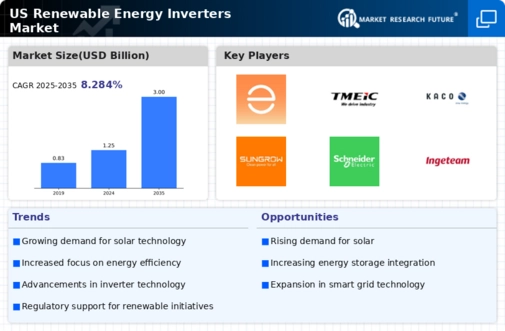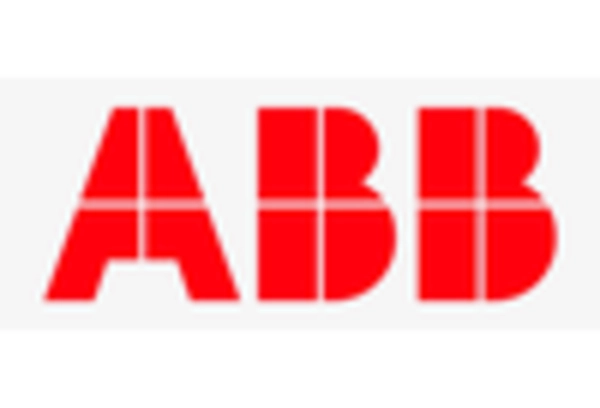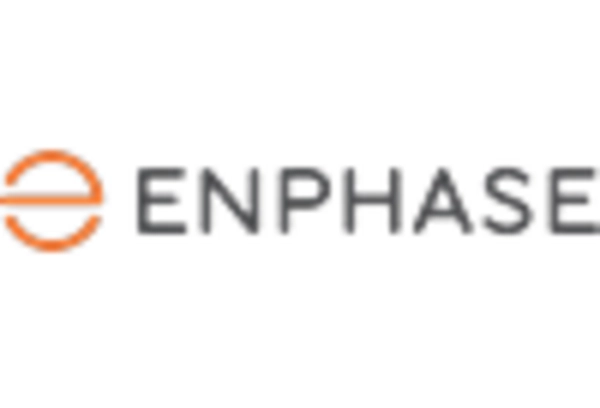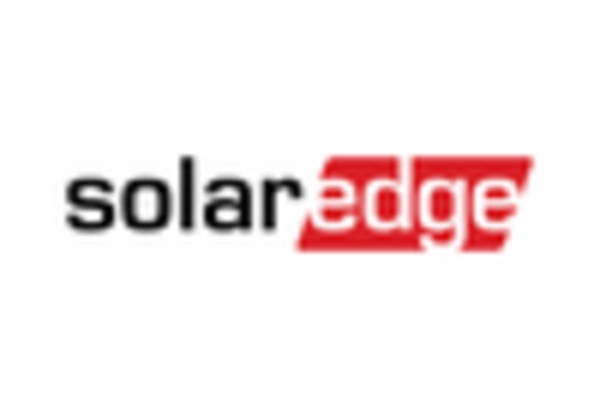Integration of Energy Storage Solutions
The integration of energy storage solutions is emerging as a significant driver for the renewable energy-inverters market. As the demand for reliable and consistent energy supply increases, the need for inverters that can efficiently manage energy storage systems becomes paramount. In 2025, the energy storage market in the US is projected to reach $10 billion, with a substantial portion attributed to solar-plus-storage systems. This trend indicates a growing reliance on inverters that can seamlessly integrate with battery storage, enhancing the overall efficiency and reliability of renewable energy systems. The renewable energy-inverters market is expected to experience robust growth as these technologies converge.
Government Policies and Financial Incentives
Government policies and financial incentives play a crucial role in shaping the renewable energy-inverters market. Federal and state-level initiatives, such as tax credits and rebates for solar installations, encourage the adoption of renewable energy technologies. In 2025, the federal solar investment tax credit (ITC) remains at 26%, providing a substantial financial incentive for consumers and businesses to invest in solar energy systems, which include inverters. This supportive regulatory environment is likely to stimulate growth in the renewable energy-inverters market, as more stakeholders take advantage of these incentives to transition to renewable energy.
Growing Adoption of Renewable Energy Sources
The increasing shift towards renewable energy sources in the US is a primary driver for the renewable energy-inverters market. As more states implement renewable portfolio standards, the demand for solar and wind energy is surging. In 2025, renewable energy accounted for approximately 25% of the total electricity generation in the US, with solar energy alone contributing around 15%. This growth necessitates advanced inverters to efficiently convert and manage the energy produced. The renewable energy-inverters market is well-positioned to benefit from this trend, as utilities and consumers alike seek reliable solutions to effectively harness renewable energy.
Technological Innovations in Inverter Design
Technological advancements in inverter design are significantly influencing the renewable energy-inverters market. Innovations such as smart inverters, which enhance grid stability and allow for better energy management, are becoming increasingly prevalent. These devices can communicate with the grid and adjust their output based on real-time data, improving efficiency. The market for smart inverters is projected to grow at a CAGR of 15% from 2025 to 2030, indicating a robust demand for these advanced solutions. As technology continues to evolve, the renewable energy-inverters market is likely to see a surge in adoption of these innovative products.
Rising Consumer Awareness and Sustainability Initiatives
Consumer awareness regarding climate change and sustainability is driving the renewable energy-inverters market. As individuals and businesses become more conscious of their carbon footprints, there is a growing inclination to invest in renewable energy solutions. Surveys indicate that over 70% of US consumers are willing to pay a premium for sustainable energy options. This shift in consumer behavior is prompting manufacturers to develop more efficient and cost-effective inverters, catering to the increasing demand. Consequently, the renewable energy-inverters market is expected to expand as more consumers seek to integrate renewable energy into their daily lives.

















Leave a Comment